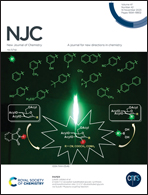Ultrafast ultrasound-assisted synthesis of microporous organic networks for the efficient removal of antibiotics†
Abstract
Microporous organic networks (MONs) are emerging porous functional materials and have been widely explored in diverse domains. However, conventional synthesis of MONs involves high temperature, long reaction time and inert-gas protection, limiting their broad applications. In this study, we demonstrate a novel green ultrasound-assisted method for ultrafast, convenient, and efficient synthesis of MONs for efficient removal of antibiotics. An ultrasonically synthesized MON (US-MON) with a large specific surface area, high yield (>90%), good thermal and hydrophobicity can be prepared within 10 min at an ultrasound power of 500 W, which largely reduce the synthesis time of MONs, making it the fastest method for the synthesis of MONs thus far. The physical and chemical properties of the US-MON were comparable to or better than those of the traditional solvothermal and room-temperature-synthesized MONs, offering a large adsorption capacity of 437.4 mg g−1 for a typical antibiotic tetracycline hydrochloride. Ultrasound-assisted synthesis of functionalized US-MON–2OH and US-MON–2NH2 was also achieved. All the ultrasonically synthesized US-MONs offered good removal efficiency for antibiotics including tetracycline and quinolones. This study uncovers the great potential of the ultrasound-assisted method for the ultrafast synthesis of MONs and broadens the application scope of MONs toward the efficient elimination of antibiotics.



 Please wait while we load your content...
Please wait while we load your content...